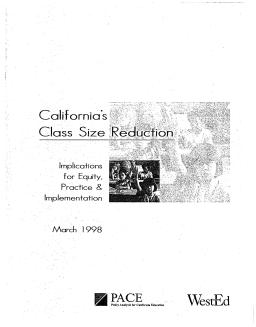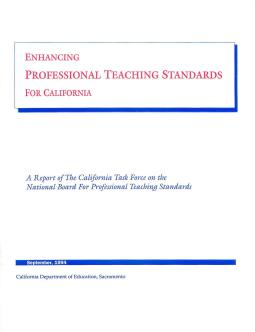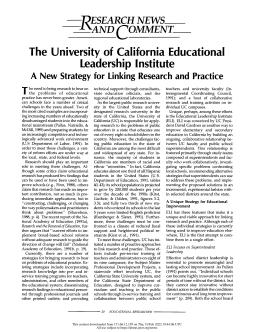Implications for Equity, Practice, and Implementation
Published
Summary
In 1996, CA launched a $1 billion class size reduction (CSR) initiative to improve early literacy. The initiative provides $800 per student to schools reducing class size to 20 or fewer in first, second, and/or third grade, and kindergarten. CSR was funded due to a state revenue surplus and the belief that smaller classes would enhance early literacy. CA ranked second to last in national reading tests in 1994, and class sizes averaged around 28.6 students per K-3 classroom. While educators and the public show enthusiasm, the success of CSR in enhancing academic achievement is yet to be seen.
A Report of the California Task Force on the National Board for Professional Teaching Standards
Published
Summary
The California Task Force on the National Board for Professional Teaching Standards, consisting of educators, administrators, parents, and officials, deliberated for eight months on how a national voluntary certification system can impact California's education landscape. They explored questions on the standards, assessment methods, incentives, and potential benefits for teachers, students, and communities. The report aims to start a dialogue and encourage continued improvement in California's schools.
A New Strategy for Linking Research and Practice
Published
Summary
The US faces critical challenges in education, such as incorporating disadvantaged students and preparing them for a competitive, tech-driven work environment. To meet these challenges, reform efforts are underway. Despite claims that educational research has produced few applicable findings, it has contributed by changing how policymakers and practitioners think about problems. The National Academy of Education argues that implementing broad-based reforms without adequate research will fail. Research must play an important role in meeting these challenges.
Overcoming Barriers, Creating New Opportunities
Published
Summary
This article highlights the changing nature of childhood, with increasing physical and mental health problems, substance abuse, child abuse, inadequate child care, and family disorganization. Furthermore, schools struggle to meet the needs of non-middle-class, nonwhite, non-English-speaking children, as more students from these backgrounds enter public schools. To improve educational prospects, school leaders must recognize how children's daily lives affect their education and adapt to these changes.



